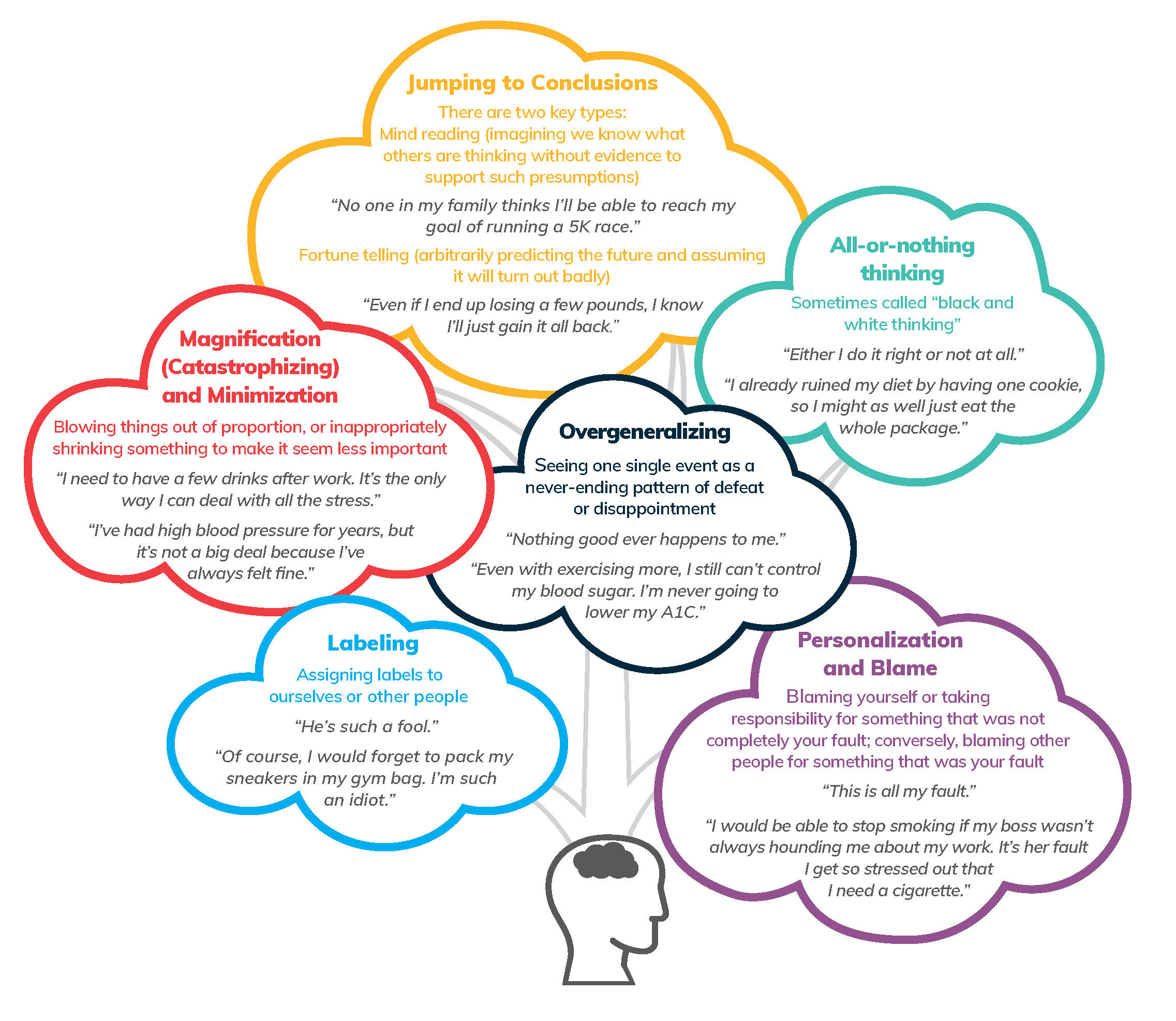
There are countless reasons why a client might quit. Some are largely out of your control as a health coach or exercise professional, such as illness, financial concerns or relocation. Others, however, stem directly from the program itself or from the client–professional relationship and, therefore, can be anticipated and potentially prevented or overcome.
We reached out to three experts to discuss the reasons clients may quit and, more importantly, strategies that can be used to retain those clients who may be teetering on the edge of leaving for good. Better yet, these strategies can help you keep clients far from that edge and continually engaged and excited about you and the program you have built together.
As you might expect, the question, “Why do clients quit?” drew a wide range of responses from our experts. Here, we’ve grouped the answers into three categories.

This is a commonly cited complaint, especially this time of year, as the buzz of New Year’s resolutions has worn off and the reality of the work involved in improving one’s health and fitness sets in. Many people simply expect changes to happen much more quickly than is reasonable, perhaps in part because of unrealistic expectations set by popular media and advertising. The amount of work involved in losing weight or getting fit surprises some people, which is why it’s so important to highlight clients’ successes and achievements along the way.
According to Lee Jordan, MS, NBC-HWC, ACE Certified Health Coach and Personal Trainer and an adjunct professor of kinesiology and integrative wellness at Point Loma Nazarene University, some clients will decide it’s not worth it anymore and even cite a lack of fairness in the disparity between the effort being given out and the results being achieved.
Jordan suggests switching to what he refers to as an experiment approach. The idea is to shift from having clients pursue “goals,” which set up a binary result of either success or failure, to having clients take an experiment approach, which involves viewing their planned action steps as part of a lifelong experiment. Each step of the way, if a particular action or set of actions does not yield the desired results, encourage the client to embrace the process of thinking about what was learned and how can they utilize that information to modify their approach in the next phase of their experiment.
Dennis Sanchez, ACE’s health coach education and training lead and an ACE Certified Health Coach and Personal Trainer, recommends revisiting the very notion of what it means to make progress. How is progress defined and what accountability systems are in place?
Simple techniques, like setting SMART goals that focus on the process rather than far-off objectives, can be a vital tool in setting realistic expectations with clients, particularly those newer to fitness.
In addition, Sanchez suggests helping clients explore what they have gotten out of the process so far. “Perhaps they have not lost weight,” he says, “but their clothes fit better, their energy levels are increased or they have been consistent, whereas in the past they have been unable to stay consistent.” Then, you can emphasize the value of what they have accomplished and highlight productive behaviors so that they are more likely to be repeated.
According to Erin Nitschke, EdD, ACE Certified Health Coach, NSCA-CPT and an exercise science professor at Laramie County Community College in Wyoming, variety is key. “Humans are creatures of habit and we generally like routine,” she says. “However, to avoid plateaus and client boredom, a workout plan requires variety. I like to include my clients in program design. I find that it gives them a greater sense of empowerment and ownership if they are asked to provide input into the program itself. I also preemptively plan to regularly make workout modifications so that the program doesn’t become stale. This also helps boost client excitement and reinvigorates their commitment to their workout program.”

Chemistry and rapport are as required for client success as a well-rounded and personalized exercise program. “For a client–personal trainer or client–health coach relationship to work, you and your client need to ‘click’ and develop a solid foundation of trust and personal connection,” Dr. Nitschke explains. “If clients aren’t feeling connected to their exercise professional, it’s more likely they will not adhere to the program or simply not return to work with that professional again.”
Dr. Nitschke continues: “To avoid this, I recommend holding a complimentary meet-and-greet session so you and the potential client can get to know each other and develop an initial connection.”
Poor communication is a common concern and can lead to the client feeling misunderstood by the professional (or vice versa) or having a lack of understanding of the services being offered.
Sanchez offers a couple of strategies for ensuring that the client feels valued. First, he suggests you continually work to build and maintain rapport. “Get to know your client and explore their reasons for beginning the change process,” he says. “How do these reasons relate to their values? Are the client’s reasons for change their own?”
Second, make sure you are not taking on an “expert role” or pushing the client toward activities or behaviors that do not align with their vision and values. “Focus on the person, not the ‘problem,’” Sanchez explains. And be sure you have made space for the client to explore potential solutions rather than reaching in to fix the problem yourself. This may involve using OARS skills—open-ended questions, affirmations, reflective listening and summarizing—to promote client curiosity and reveal what motivates the client’s need for change.
When it comes to avoiding a potential misunderstanding about the services you provide, Dr. Nitschke offers some advice: “Often, when potential clients seek the services of a health coach or exercise professional, they do so with a perceived understanding of what they will get out of the experience. For example, a client may want to hire a personal trainer because they feel that type of professional can create specific meal plans for them. Or a client may seek a health coach because they would like to be given a specific plan to follow to address a chronic condition. In other words, potential clients do not come to us with a deep understanding of the scope of practice we operate within.”
For this reason, she explains, it’s important to be clear about what services you offer and what clients can expect if they choose to work with you. “I like to have a ‘welcome packet’ available (electronically and in hard-copy),” Dr. Nitschke says, “that outlines exactly what I can offer and what clients can expect from my services. Typically, my packets include a welcome letter, a menu of services, pricing structure/package offerings, payment options, etc.”
Clearly, effective communication strategies are absolutely vital ingredients of client retention. Have a conversation with each client early in your relationship to discuss their preferred communication methods, the frequency and type of communication they think will help them on their journey, as well as what the client can expect from you as their partner on this journey and as a trusted source of health-related information. It’s also important to set communication boundaries in both directions so that neither of you feel ignored or, on the other hand, get annoyed or feel overburdened.

This issue connects back to communication, as it is your role as the professional to help each client set realistic expectations and goals that align with their values and current lifestyle. If clients don’t understand the behavior-change process—which is complex and decidedly nonlinear—they are set up for disappointment from the outset.
Again, Sanchez offers a few strategies. Begin by exploring each client’s attitudes, beliefs and expectations about the behavior-change journey, and then provide clarity where it is needed in order to enhance motivation and self-efficacy. Then, collaborate with the client to break down larger overall goals into smaller, more manageable ones that can serve as steppingstones and checkpoints along the way.
Jordan reiterates the complexity of the behavior-change process, pointing out that change does not occur in a smooth, predictable manner, but rather in a dynamic and often conflicted way. As a result, clients often mistakenly feel they have failed during the tougher times in their journey—which, by the way, are inevitable—leading to a cycle of blame, shame, regret and repeat. “This cycle,” Jordan says, “is mentally and emotionally painful and results in quitting the change program to escape the pain.”
To combat this, explains Jordan, “the key is for the client to embrace non-judgement and own their choices without harshly viewing themselves as morally flawed.” The goal is to shift from blame, shame, regret and repeat to a cycle of identify, own, forgive and advance. This ties back to the experiment approach outlined earlier; if the results of a particular element of the program aren’t what the client wanted, modify the approach in an attempt to drive new results.
One Final Strategy
Jordan offers one final strategy that can help you retain clients, no matter their reason for considering quitting, what he calls the “3 Cs”: catch, challenge and change. Drawn from cognitive behavioral coaching, this technique is used to help clients catch (i.e., identify) the internal dialogue or thought that is driving them to consider quitting, challenge that thought by evaluating how accurate or viable it is, and then change the thought to something more positive and motivational.
As a health coach or exercise professional, you may notice a client using cognitive distortions—which are irrational and usually harmful thought patterns that interfere with a person’s well-being—when discussing their behaviors or the results of their programs (Figure 1). These should serve as red flags that the client’s thought process may be turning toward becoming chronically negative and unproductive, and that they are on the path to potentially quitting.

Figure 1. Cognitive distortions
If you perceive this in a client, use a client-centered approach and employ your coaching skills (e.g., the ACE Mover Method™, the ACE ABC Approach™ or cognitive restructuring) to uncover and reframe unproductive thoughts.
The ultimate goal is to create a dynamic, inspirational and personalized program that keeps clients at peak motivation and optimizes outcomes. In the real world, that is seldom, if ever, possible to maintain over the long haul. So, it is vital that you are vigilant about identifying signals that a client’s commitment may be waning and have strategies to modify their program or empower them to adjust their thinking in a more positive direction. The road to wellness is rarely straight and smooth, but the strategies outlined above can help clients stay on track when the ride gets rough.





 by
by 






